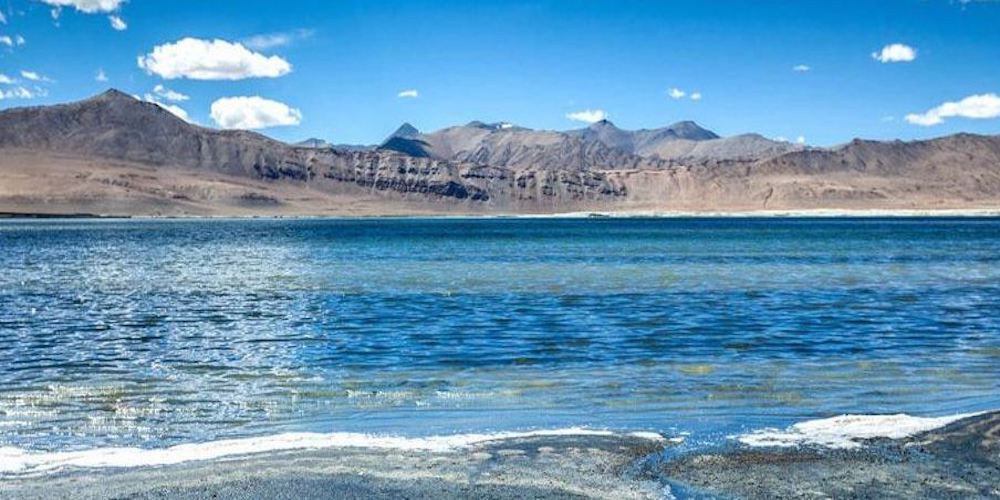India now has forty-two Ramsar sites

As a manifestation of its determination to preserve the ecological balance in the Himalayan region, the Government of India has added Tso Kar Wetland Complex in Ladakh as its 42nd Ramsar site, which is a second one in the Union Territory (UT) of Ladakh.
The complex is a notable example of two connected lakes, the freshwater Startsapuk Tso & the hypersaline Tso Kar.
Startsapuk Tso , a freshwater lake of about 438 hectares to the south, and Tso Kar itself, a hypersaline lake of 1800 hectares to the north, are situated in the Changthang region of Ladakh . It is called Tso Kar, meaning white lake, because of the white salt efflorescence found on the margins due to the evaporation of highly saline water.
The Tso Kar Basin is an A1 Category Important Bird Area (IBA) as per Bird Life International and a key staging site in the Central Asian Flyway. The site is also one of the most important breeding areas of the Black-necked Crane (Grus nigricollis) in India. This IBA is also the major breeding area for Great Crested Grebe (Podicepscristatus), Bar-headed Geese (Anserindicus), Ruddy Shelduck (Tadornaferruginea), Brown-headed Gull (Larusbrunnicephalus), Lesser Sand-Plover (Charadriusmongolus) and many other species.
It may be noted that the aim of the Ramsar list is “to develop and maintain an international network of wetlands which are important for the conservation of global biological diversity and for sustaining human life through the maintenance of their ecosystem components, processes and benefits”.
Wetlands provide a wide range of important resources and ecosystem services such as food, water, fibre, groundwater recharge, water purification, flood moderation, erosion control and climate regulation. They are, in fact a major source of water and our main supply of freshwater comes from an array of wetlands which help soak rainfall and recharge groundwater.
The Ministry of Environment, Forest & Climate Change would be working closely with the UT Wetland Authority in Ladakh to ensure wise use of this site.
There are a total of 2400 Ramsar Sites in the world, including 42 Ramsar sites in India. Uttar Pradesh heads the list with 8 Ramsar sites out of 42, followed by Punjab which has 6 Ramsar sites.
It may be noted that Ramsar sites are wetlands that are considered to be of international importance. The international convention which forms the basis for their identification is commonly referred to as the “Ramsar Convention” after the city in Iran where the convention was signed in 1971. The Convention is an international treaty for the conservation and wise use of wetlands. All joining Parties of the Ramsar Convention commit themselves to work towards the “three pillars” of the Convention:
1 – Ensuring the conservation and wise use of wetlands it has designated as Wetlands of International Importance
2 – As far as possible the wise use of all wetlands in national environmental planning
3 – Consulting with other Parties about implementation of the Convention, especially in regard to trans-boundary wetlands, shared water systems, and shared species.
Upon joining, each Contracting Party is obliged to designate at least one wetland site for inclusion in the List of Wetlands of International Importance.
The main objective of this key obligation is “to develop and maintain an international network of wetlands which are important for the conservation of global biological diversity and for sustaining human life through the maintenance of their ecosystem components, processes and benefits/services”.
There are currently 168 Contracting Parties to the Ramsar Convention.
The Convention uses a broad definition of wetlands as “areas of marsh, fen, peatland or water, whether natural or artificial, permanent or temporary, with water that is static or flowing, fresh, brackish or salt, including areas of marine water the depth of which at low tide does not exceed six metres”.
Wetlands to be included on the List may incorporate riparian and coastal zones adjacent to the wetlands, and islands or bodies of marine water deeper than six metres at low tide lying within the wetlands.



